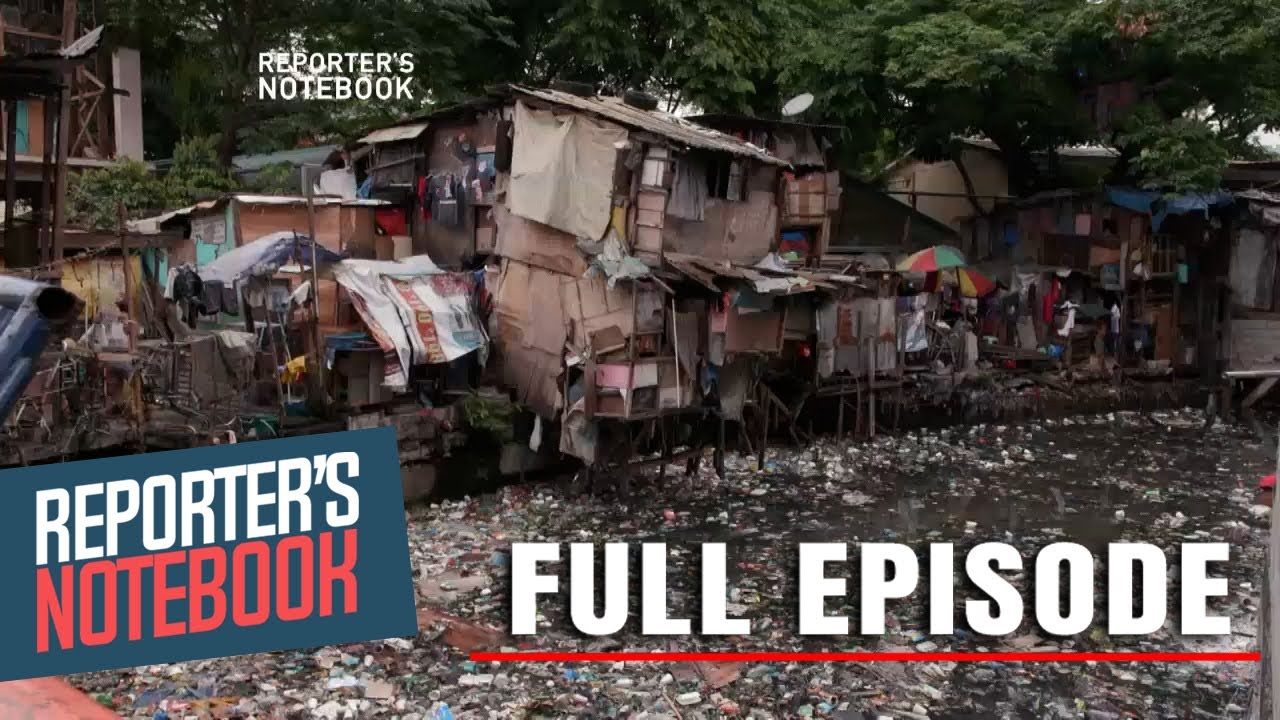‘Basura in the City’ (Full Episode) | Reporter's Notebook
Summary
TLDRThe video highlights the severe pollution of the San Juan River and Estero de Magdalena in Metro Manila, showcasing the accumulation of waste and its impact on the community. Residents, like Joel and Aling Lydia, share their experiences with the increasing trash, emphasizing the government's inadequate waste management efforts. Despite the challenges, some locals, such as Belinda and Jojo, find ways to survive by scavenging for food in landfills. The piece calls for improved waste disposal practices and stricter implementation of ecological solid waste management laws, stressing that everyone shares the responsibility for maintaining a cleaner environment.
Takeaways
- 🌊 The San Juan River is severely polluted, with waste blocking its flow and causing health hazards.
- 🗑️ Residents have witnessed the increase in waste over the years, despite numerous administrations passing by without significant improvements.
- 🏙️ The local government of Mandaluyong City acknowledges that waste comes from multiple cities, complicating cleanup efforts.
- 🚧 Clean-up operations by the MMDA are ongoing, but challenges remain due to the sheer volume of waste accumulated.
- 💧 The Estero de Magdalena in Santa Cruz, Manila, also suffers from pollution, with residents using it as a toilet due to lack of proper facilities.
- 📉 There is a significant problem with waste segregation and management, leading to mixed waste being sent to landfills.
- 🏭 The accumulation of waste in waterways contributes to flooding in Metro Manila, particularly during heavy rains.
- 👨🌾 Waste collectors, like Belinda and Jojo, rely on scavenging from landfills to support their families, highlighting the economic impact of waste management issues.
- 📊 As of 2016, there were over 400 open dump sites in the Philippines, despite the Ecological Solid Waste Management Act prohibiting them.
- 📅 Projections suggest that by 2025, the Philippines could accumulate 77,000 tons of waste, significantly worsening the current waste crisis.
Q & A
What environmental issue is highlighted in the transcript?
-The transcript discusses the severe pollution of the San Juan River and Estero de Magdalena, emphasizing the accumulation of waste that affects water flow and local ecosystems.
Who is Joel, and what does he represent in the narrative?
-Joel is a resident living by the Sevilla Bridge, and he represents the local community's experience and awareness of the increasing waste problem in their area.
What role do local governments play in managing waste in the areas discussed?
-Local governments, like Mandaluyong City, claim that waste pollution in the San Juan River comes from multiple cities, indicating a need for cooperative regional waste management efforts.
How does the local community contribute to the pollution problem?
-Some residents admit to directly contributing to the pollution by improperly disposing of waste into the river and estuary, highlighting a lack of awareness about waste segregation.
What are the challenges faced by the MMDA (Metro Manila Development Authority) in cleaning these waterways?
-The MMDA faces the challenge of persistent waste accumulation, which requires continuous cleaning efforts. Despite these efforts, waste quickly re-accumulates due to ongoing improper disposal practices.
What specific legislation is mentioned in relation to waste management?
-The transcript references Republic Act 903, also known as the Ecological Solid Waste Management Act, which mandates proper waste segregation and management practices that are often not adhered to.
How does the transcript illustrate the socioeconomic impact of waste management issues?
-The transcript depicts individuals like Belinda and Jojo, who depend on scavenging from landfills for their livelihood, showcasing how waste management issues affect lower-income communities and their survival.
What are some consequences of improper waste disposal mentioned in the transcript?
-Improper waste disposal leads to polluted waterways, health hazards from contaminated water, and potential flooding due to blocked drainage systems, illustrating the interconnectedness of waste management and public health.
What solution is suggested for improving waste management in the community?
-Improving community awareness about proper waste disposal practices and implementing effective waste segregation at the source are suggested as crucial steps towards resolving the waste management crisis.
What long-term projection does the transcript provide regarding waste accumulation?
-The transcript notes that by 2025, the volume of waste in the country could reach 77,000 tons, significantly increasing the existing waste management challenges faced by local governments.
Outlines

このセクションは有料ユーザー限定です。 アクセスするには、アップグレードをお願いします。
今すぐアップグレードMindmap

このセクションは有料ユーザー限定です。 アクセスするには、アップグレードをお願いします。
今すぐアップグレードKeywords

このセクションは有料ユーザー限定です。 アクセスするには、アップグレードをお願いします。
今すぐアップグレードHighlights

このセクションは有料ユーザー限定です。 アクセスするには、アップグレードをお願いします。
今すぐアップグレードTranscripts

このセクションは有料ユーザー限定です。 アクセスするには、アップグレードをお願いします。
今すぐアップグレード関連動画をさらに表示

Problema sa basura ng ating bansa, masosolusyunan pa ba? (Full Episode) | Reporter’s Notebook

Mga bata sa Manila Bay, sa basura umaasa para may makain — Bata at Basura (Full Episode) | Kara Docs

Saksi: (Recap) Bago sa SAKSI: kaso ng mpox sa bansa, 15 na... (Originally aired on Sept 11, 2024)

Sungai Paling Tercemar Di India? Busa Beracun Malah Dipakai Mandi! Yamuna! | Learning By Googling

Pandawara Group Kembali Beraksi, Bersihkan Sampah di Kali Krukut Depok

Flood hits Metro Manila roads on Wednesday | INQToday
5.0 / 5 (0 votes)
